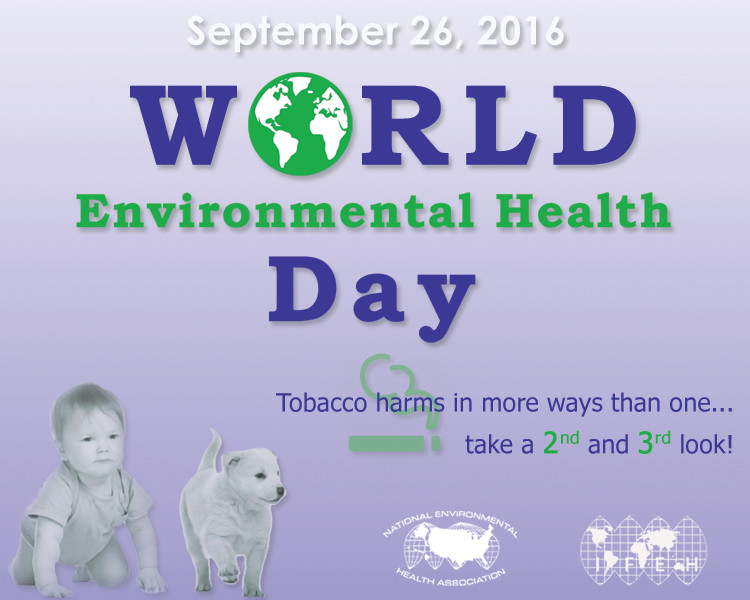Press release
World Environmental Health Day is September 26, which recognizes the importance of protecting the air we breathe, the food we eat and the water we drink and play in. This year’s theme is tobacco control and the National Environmental Health Association is focusing specifically on the negative health effects of second and third hand smoke.
 The Galion City Health Department reminds the community that 443,000 Americans die of smoking or exposure to secondhand smoke each year. The American Cancer Society has stated tobacco use was the most preventable cause of death worldwide in 2015.
The Galion City Health Department reminds the community that 443,000 Americans die of smoking or exposure to secondhand smoke each year. The American Cancer Society has stated tobacco use was the most preventable cause of death worldwide in 2015.
The Crawford County Community Health Assessment conducted in 2015 found that 20 percent of Crawford County adults were current smokers and 23 percent were former smokers. Twenty-one percent of adults reported someone had smoked cigarettes, cigars or pipes in their home in the past month.
Smoking Dangers
Tobacco smoke contains more than 7,000 chemicals. Hundreds are toxic and about 69 of them can cause cancer.
Environmental health professionals work with health care providers, local leaders and businesses to reduce exposure to toxins typically found in tobacco smoke through sampling, enforcement, and education.
No level of secondhand smoke (SHS) exposure is safe. SHS exposure occurs when nonsmokers breathe in smoke exhaled by smokers or from burning tobacco products. The Center for Disease Control estimates it kills more than 400 infants and 41,000 adult nonsmokers every year.
Third hand smoke is nicotine residue that remains on surfaces including walls, doors, drapery, carpets, clothes, furniture, flooring material and acoustic tiles in ceilings. This pollutant also can be inhaled when it is re-emitted through dust in the air, and it can react with substances in the environment. Some chemicals found in third hand smoke are: Hydrogen cyanide, butane, arsenic and lead.
People, especially seniors and children, and pets are affected by this under-appreciated health hazard through skin exposure, dust inhalation and ingestion.
What You Can Do
Avoid any indoor environment that was used long-term by smokers. Insist that smokers go outdoors and do not smoke in homes or in cars. Support smoking bans and enforcement of them.
Support smoke-free policies and the work of environmental health professionals who advocate for healthy communities. Many of the following indoor places in the U.S. have become smoke free, including in Ohio:
- Hospitals
- Nursing Homes
- Colleges and Universities
- Hotels
- Airports
- Bars and restaurants
- Workplaces
Smoking cessation assistance and information are available from the Cardiac Rehab departments at both Galion Hospital and Bucyrus Hospital. This support will assist in dealing with the effects of withdrawal from nicotine addiction during working hours and personal time. Call 419-468-4841 for more information.
For more resources to quit smoking, call 1-800-QUIT-NOW or go to www.smokefree.gov or www.quitsmokingcommunity.org


